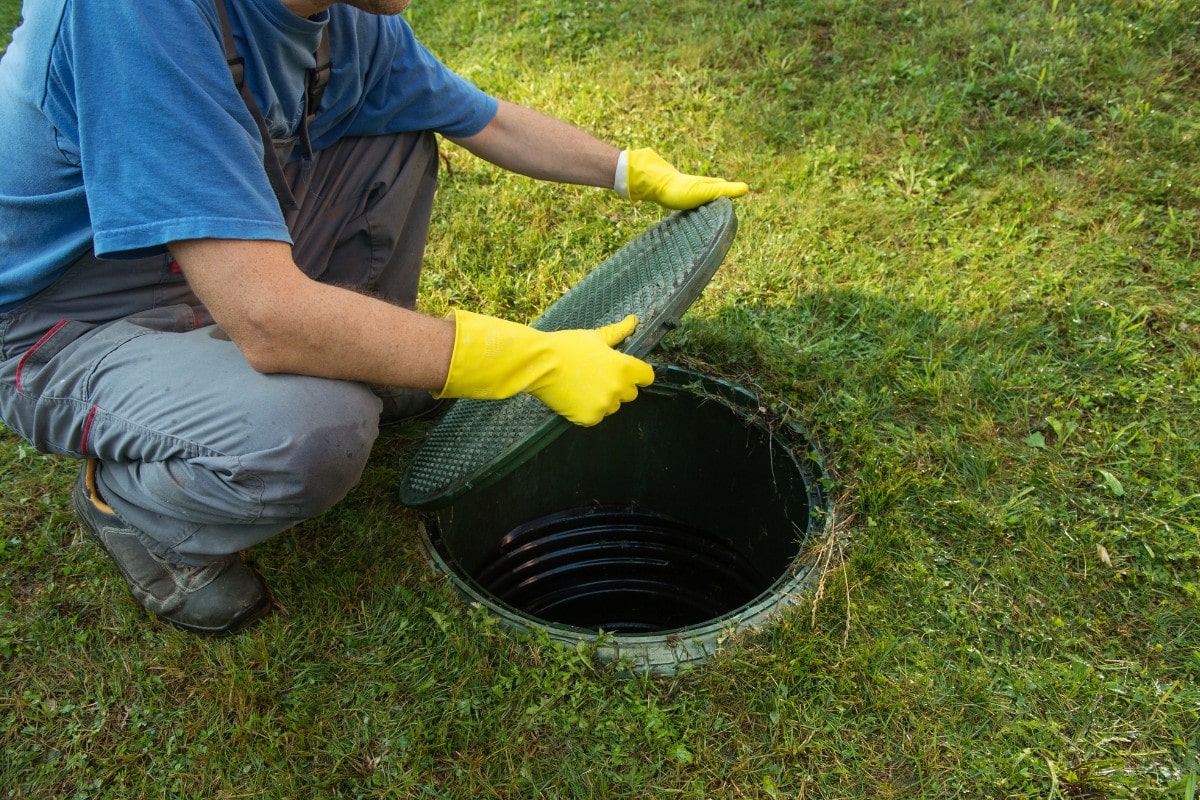When you bought that new house, you probably assumed the septic tank would be easy to find when you needed to. It most instances, it is. Homeowners typically jot down a diagram indicating the location of the septic tank, but sometimes diagrams get lost in the shuffle leaving you will no idea where to find the tank. Fortunately, there are ways to locate your septic tank without digging up the entire yard.
Check for Records
The first step to locating your septic tank is to think like the original owner and check common areas for a rough sketch of the property.You’ll want to check any paperwork, like the deed first, of course, as it may indicate the location of the septic tank and drain field. Otherwise, check the joists or foundation of the home near the exit pipe to the septic tank. You may be pleasantly surprised to discover a hand-drawn map or, at the very least, a note on the distance to the septic tank.
Ask Around
Sometimes, you just need to talk to the right people to find out where your septic tank is located.
- Talk to the previous owner or previous tenants. If the septic tank was pumped during the time he owned the home, he should be able to tell you where it is located.
- Talk to neighbors. If you are lucky enough to have long-term neighbors, they may remember where the tank is located, even if the previous owner does not.
- Call your local septic pump companies. If they have been to your property in the past to pump the septic tank, they may have records of where it is located.
Look for Visual Cues
Sometimes locating the septic tank is as simple as taking a walk around your property and taking a close look at the soil and vegetation.
- Observe the vegetation in your yard and note areas where the grass or vegetation appears different from the surrounding areas. This may mean a different type of grass or weeds growing in the soil. Because the area over the septic tank may have been seeded, the color or texture of the grass may differ from surrounding areas.
- Look for areas of dead or dying grass. If the septic tank (or cover) is buried shallowly, there may not be enough soil for grass to form strong roots. The grass in this area may die off easily in hot, dry weather.
- Watch for areas where the snow melts faster than other areas. According to Inspectapedia, normal bacterial action in the septic tank may cause the area to be slightly warmer and causing snow to melt quicker.
- Look for a round of rectangular area that is slightly raised (or depressed) or has clearly defined borders. This may indicate the area was dug up at some time and point the way to the septic tank.
- Check for a metal plate, grate, or pipe in the grass or soil. Although the tank itself may be hidden, the cover may be visible.
Locating It Physically
If your efforts to locate the septic tank visually are unsuccessful, it’s time to get physical.
- Locate the outlet pipe from the wastewater and dig a shallow trench perpendicular to the pipe about four feet from the house. Dig until you locate the pipe. Follow the pipe to the septic tank by digging down to the pipe every four feet until you reach the tank.
- Use a metal detector to locate the pipe or tank. This is an effective way to locate the tank, but beware, you may get false readings if there are other pipes (or buried treasure) located nearby.
- Use a plumbing snake. Run it through the outlet pipe until it hits the septic tank. Measure the length of the snake to determine how far the septic tank is from the house.
Begin with the simplest step and progress to the most difficult. You may be pleasantly surprised to find out your new neighbor is a storehouse of information on your property or that the prior owner kept meticulous records right on the foundation of the house. If all else fails, call a professional and let them take over.









